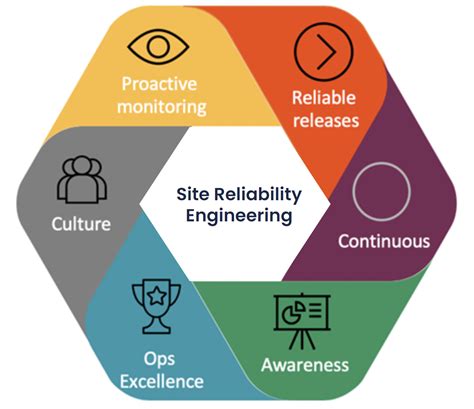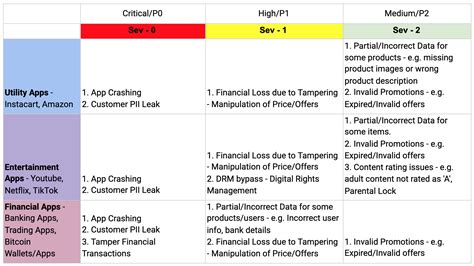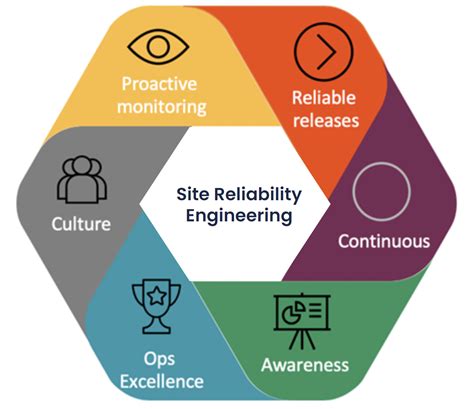Breaking News


Popular News


Discover the importance and benefits of Site Reliability Engineering for online businesses. Learn how to implement SRE, measure its impact, and best practices. As online businesses continue to grow and evolve, the importance of ensuring the reliability and stability of their websites and applications becomes increasingly crucial. This is where Site Reliability Engineering (SRE) comes into play. In this blog post, we will delve into the world of SRE and explore its significance for online businesses. We will start by defining what Site Reliability Engineering is and then move on to discuss the various benefits it offers to businesses. We will also look at the process of implementing SRE and how to measure its impact on the overall performance of a website or application. Additionally, we will touch upon some best practices for Site Reliability Engineering that businesses can adopt to ensure a seamless and reliable online presence. By the end of this post, you will have a deeper understanding of the role SRE plays in the success of online businesses and why it is a critical component in today’s digital landscape.
Contents

Site Reliability Engineering (SRE) is an emerging discipline in the field of software engineering that focuses on creating scalable and reliable systems. It is a set of practices and principles that aims to ensure that online businesses have reliable and efficient systems that can handle the demands of their users.
SRE is a combination of software engineering and operations that emphasizes on creating scalable and reliable systems. It aims to develop automated solutions to complex problems and to prevent them from occurring in the first place. The goal of SRE is to ensure that online businesses have reliable and efficient systems that can handle the demands of their users.
SRE is very important for online businesses as it helps in improving the reliability and performance of their systems. It allows businesses to focus on their core products and services without having to worry about system failures and downtime. By implementing SRE practices, businesses can ensure that their systems are always available and resilient to any issues that may arise.

Site Reliability Engineering (SRE) is a discipline that incorporates aspects of software engineering and applies them to infrastructure and operations problems. By doing so, SRE helps organizations to create scalable and reliable software systems. The primary benefit of implementing SRE practices is the improved reliability and performance of online businesses. When systems are more reliable, customers are more likely to have a positive experience, leading to increased trust and loyalty.
Another benefit of Site Reliability Engineering is the reduction in downtime and outages. SRE principles aim to minimize the impact of disruptions on the user experience, which in turn can prevent revenue loss and damage to the brand’s reputation. This is achieved through proactive monitoring, automated incident response, and effective capacity planning.
Furthermore, SRE can also lead to cost savings for online businesses. By optimizing system performance and resource utilization, organizations can avoid unnecessary infrastructure expenses and improve the overall efficiency of their operations. This can result in a more streamlined and cost-effective infrastructure, allowing businesses to allocate resources more strategically.
In conclusion, the benefits of implementing Site Reliability Engineering are numerous and significant for online businesses. By prioritizing reliability, reducing downtime, and optimizing costs, organizations can achieve a competitive edge in the digital landscape.

Site Reliability Engineering (SRE) is a discipline that incorporates aspects of software engineering and applies them to infrastructure and operations problems. Implementing SRE within an organization involves shifting the focus from simply managing systems to creating a culture of writing code for systems. This approach emphasizes automating tasks, monitoring system performance, and responding to incidents efficiently.
One of the key steps in implementing SRE is establishing a dedicated team of engineers who are responsible for the reliability of a company’s systems. These engineers work closely with development teams and operations teams to prioritize and address reliability concerns. By creating this collaborative environment, organizations can proactively identify and resolve potential issues before they impact end users.
Another important aspect of implementing SRE is setting clear and measurable service level objectives (SLOs) for system performance. These SLOs provide a framework for defining reliability targets and ensure that all teams are aligned with the same goals. Monitoring the performance of systems against these SLOs allows organizations to make data-driven decisions and continuously improve system reliability.
Furthermore, organizations can benefit from implementing SRE by creating a blameless culture that encourages learning from incidents and sharing knowledge across teams. This approach fosters a sense of ownership and accountability for system reliability, leading to more resilient and efficient operations.

Measuring the impact of Site Reliability Engineering (SRE) is crucial for online businesses to understand the effectiveness of their SRE practices. One way to measure the impact of SRE is to analyze the uptime and availability of the website or application. This involves tracking the frequency and duration of outages, as well as the overall reliability of the system.
Another important metric for measuring the impact of SRE is the mean time to recover (MTTR) from incidents. By monitoring how quickly the SRE team is able to resolve and recover from incidents, businesses can assess the efficiency of their SRE processes and identify areas for improvement.
Furthermore, measuring the impact of SRE involves analyzing the correlation between SRE efforts and customer satisfaction. This can be achieved through customer feedback, user experience metrics, and Net Promoter Scores (NPS). Understanding how SRE practices directly affect customer experience is essential for demonstrating the value of SRE to the overall success of the business.
Lastly, businesses can use key performance indicators (KPIs) such as server response times, error rates, and scalability metrics to quantitatively assess the impact of SRE on the performance and stability of their systems. By establishing clear KPIs and regularly monitoring them, businesses can effectively measure and optimize the impact of their SRE initiatives.

The Importance of Site Reliability Engineering for Online Businesses
Implementing Site Reliability Engineering (SRE) can help online businesses ensure that their systems are reliable and perform at optimal levels. However, simply implementing SRE is not enough. To truly benefit from SRE, it is important to follow best practices that have been proven to be effective in ensuring the success of the SRE process.
One of the best practices for SRE is to establish clear Service Level Objectives (SLOs) and Service Level Indicators (SLIs). By defining these metrics, businesses can set clear expectations for the reliability and performance of their systems. This allows for better monitoring and measurement of system performance, enabling teams to take proactive steps to address any issues that may arise.
Another best practice for SRE is to prioritize automation in all aspects of system management. Automation can help streamline processes, reduce the potential for human error, and ultimately improve system reliability. By automating tasks such as deployment, monitoring, and incident response, businesses can ensure that their systems are consistently performing at high levels.
Additionally, it is important for businesses to prioritize collaboration and communication between development and operations teams. By fostering a culture of collaboration, businesses can ensure that all teams are working towards the common goal of system reliability. This can help to avoid silos and ensure that all stakeholders are aligned in their efforts to improve system performance and reliability.

What is Site Reliability Engineering (SRE)?
SRE is a discipline that incorporates aspects of software engineering and applies them to infrastructure and operations problems. It aims to create scalable and highly reliable software systems.
Why is SRE important for online businesses?
SRE is important for online businesses because it helps ensure that their systems are reliable, scalable, and efficient. This is crucial for providing a positive user experience and maintaining customer trust.
What are the key principles of SRE?
The key principles of SRE include error budgeting, monitoring, alerting, incident response, and capacity planning. These principles help businesses maintain a balance between reliability and development velocity.
How does SRE contribute to business success?
SRE contributes to business success by reducing downtime, improving system performance, and enabling faster innovation. It also helps businesses adapt to changing user needs and market demands.
What are some common challenges in implementing SRE?
Common challenges in implementing SRE include organizational resistance to change, lack of clear metrics for reliability, and difficulty in balancing reliability with new feature development.
What are the skills required for a career in SRE?
Skills required for a career in SRE include expertise in coding, automation, system design, troubleshooting, and collaboration. SREs also need strong communication and project management skills.
How can businesses get started with SRE?
Businesses can get started with SRE by establishing clear reliability metrics, implementing monitoring and alerting systems, conducting regular post-incident reviews, and gradually introducing SRE practices into their development and operations teams.